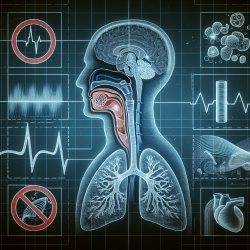Introduction
Autism Spectrum Disorder (ASD) is a complex neurodevelopmental condition characterized by challenges in social interaction, communication, and repetitive behaviors. While the causes of ASD are multifactorial, recent research highlights a significant link between ASD and inherited metabolic disorders (IMDs). This blog explores the findings from the research article "Biochemical, Genetic and Clinical Diagnostic Approaches to Autism-Associated Inherited Metabolic Disorders" and offers insights into how practitioners can enhance their skills by applying these findings.
Understanding the Link Between ASD and IMDs
The pathophysiology of ASD involves a combination of genetic, epigenetic, and environmental factors. Among these, inherited metabolic disorders play a crucial role. IMDs are a group of genetic disorders that affect the body's metabolism. They are often rare but collectively have a significant impact on individuals with ASD.
The research underscores the importance of biochemical, genetic, and clinical approaches in diagnosing IMDs associated with ASD. By identifying these disorders early, practitioners can implement targeted treatments that improve the quality of life for individuals with ASD.
Biochemical and Genetic Diagnostic Approaches
Biochemical diagnostics involve analyzing body fluids to detect metabolic abnormalities. This can confirm the presence of general metabolic or lysosomal storage diseases. Advances in genomic testing, such as whole-exome sequencing (WES) and chromosomal microarray (CMA), have significantly improved the ability to identify molecular defects in individuals with ASD.
These diagnostic tools are particularly valuable in communities with high levels of consanguinity, where the prevalence of IMDs is higher. Early recognition and treatment of these disorders can lead to optimal care and better outcomes for ASD patients.
Clinical Implications and Multidisciplinary Approaches
Practitioners are encouraged to adopt a multidisciplinary approach when investigating IMDs in ASD patients. This team should include clinicians, chemical pathologists, clinical biochemists, and clinical geneticists. The goal is to understand the underlying pathophysiology, provide genetic counseling, and determine potential therapies.
Such a collaborative approach ensures a comprehensive evaluation of ASD individuals, considering their unique clinical information and potential IMDs. By doing so, practitioners can tailor biochemical and molecular evaluations to meet the specific needs of each patient.
Encouraging Further Research
The research highlights the need for further studies to explore the prevalence and diagnostic yield of metabolic investigations in ASD individuals. Large population-based studies are essential to provide accurate estimates and improve diagnostic algorithms.
Practitioners are encouraged to engage in ongoing research and stay informed about advancements in the field. By doing so, they can contribute to a better understanding of ASD and its associated metabolic disorders, ultimately leading to improved interventions and outcomes.
Conclusion
Understanding the biochemical, genetic, and clinical diagnostic approaches to autism-associated inherited metabolic disorders is crucial for practitioners working with ASD individuals. By implementing these approaches, practitioners can enhance their diagnostic capabilities and provide targeted treatments that improve the quality of life for their patients.
To read the original research paper, please follow this link: Biochemical, Genetic and Clinical Diagnostic Approaches to Autism-Associated Inherited Metabolic Disorders.










